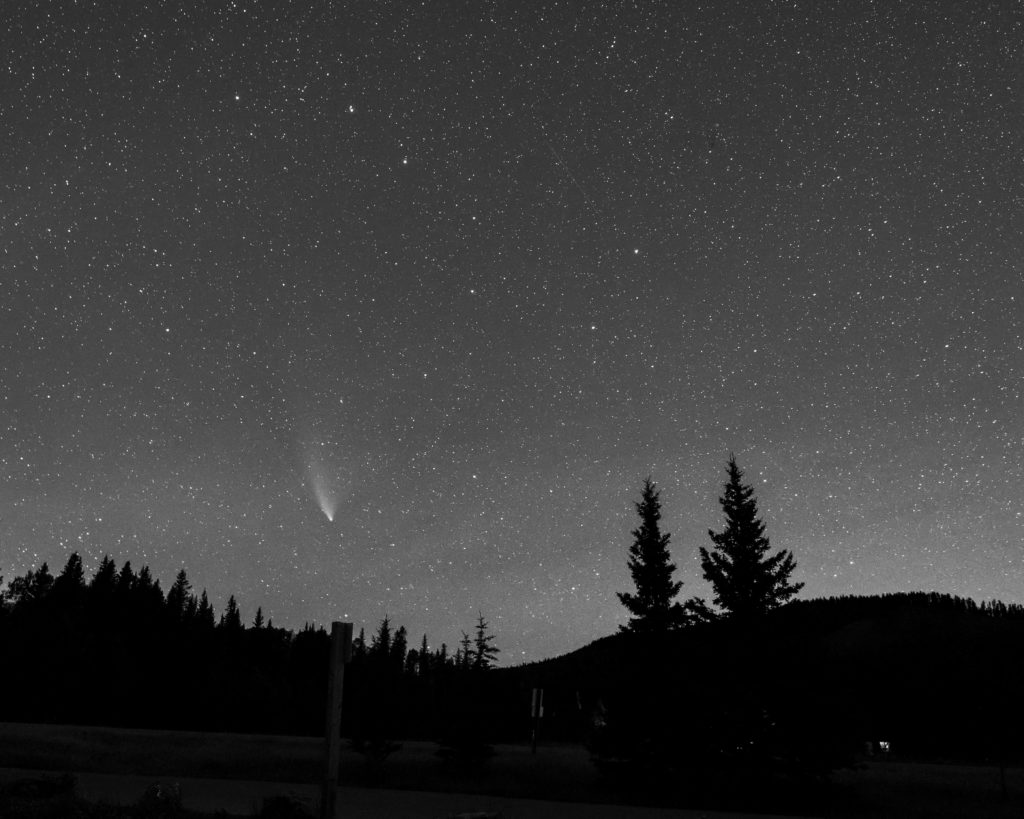
August is usually the finest month for observing the night sky. For northern-hemisphere observers, the weather is still warm, but much of the unsettled and humid summer air dissipates and skies become drier and clearer. Observers in the southern hemisphere enjoy warmer weather as winter nears an end, and the center of the Milky Way, the starriest part of the night sky, lies nearly overhead. This year, Jupiter, Saturn and Mars are big, bright, and beautiful in a telescope, while brilliant Venus rises in the pre-dawn. The great Perseid meteor shower peaks mid month. And Comet NEOWISE slowly fades from view. Here’s what to see in the night sky this month.
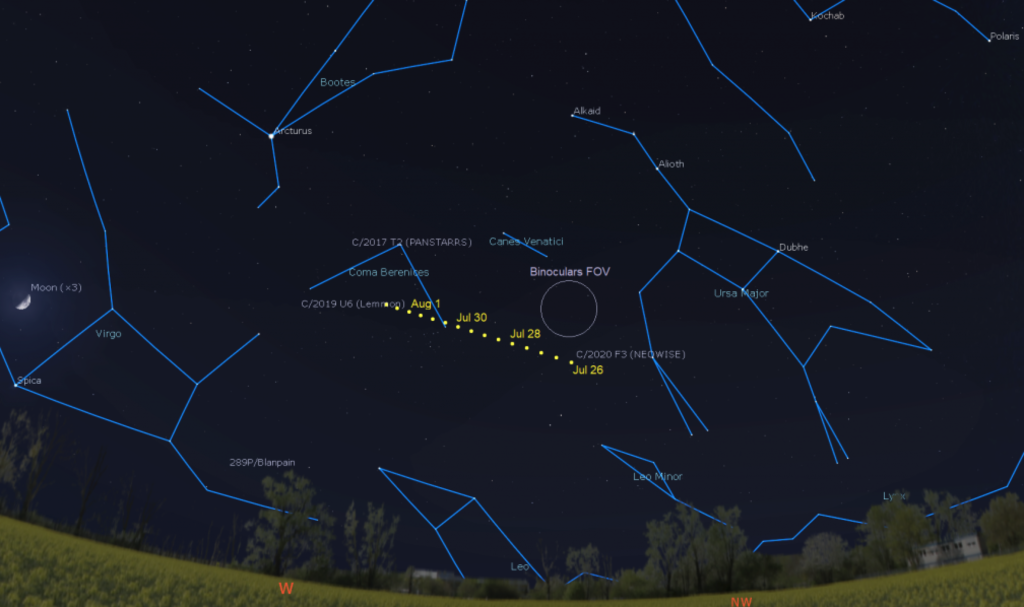
1-7 August. Comet NEOWISE is fading, now down to about 4th magnitude (as of today) from a peak of first magnitude in early July. It’s still an easy binocular object as it moves under the handle of the Big Dipper into the constellation Coma Berenices. Look for it low over the northwestern horizon as darkness falls. It’s visible in the northern and southern hemispheres.
1-2 August. The nearly-full Moon sits just 1.5o south of Jupiter as darkness falls, and as the evening turns to morning, slides under the planet Saturn as well. The two gas giants are just past opposition, ideal for patient inspection with a telescope. Saturn, about 10x fainter than Jupiter but still a prominent sight, lies about 8o east of Jupiter and remains there for all of August.
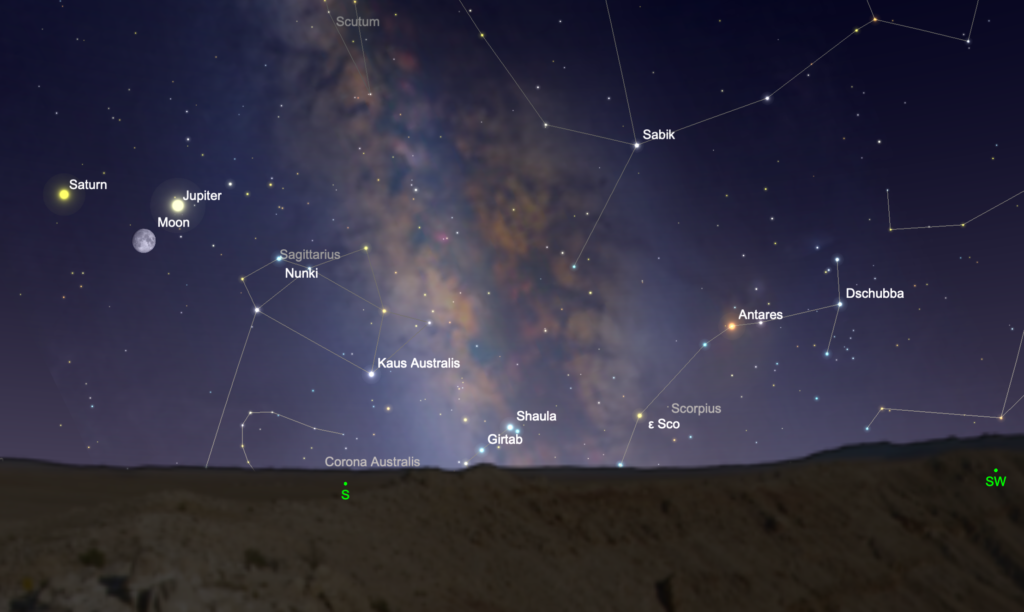
3 August. Full Moon, 15:59 UT
9 August. Jupiter and Saturn are putting on a great show this summer, but Mars is quickly muscling in on the act as it gets bigger and brighter on its way to opposition on October 13. The Red Planet rises about 11:30 p.m. local time in mid-August. Today it lies just 0.8º north of the waning gibbous Moon. It already shines at magnitude -1.3, brighter than any star in the summer sky, and sits just north of the celestial equator in Pisces. Mars has grown close enough to reveal a little detail in a telescope in good seeing, and it will only get better in the coming weeks.
11 August. Last-Quarter Moon, 16:45 UT
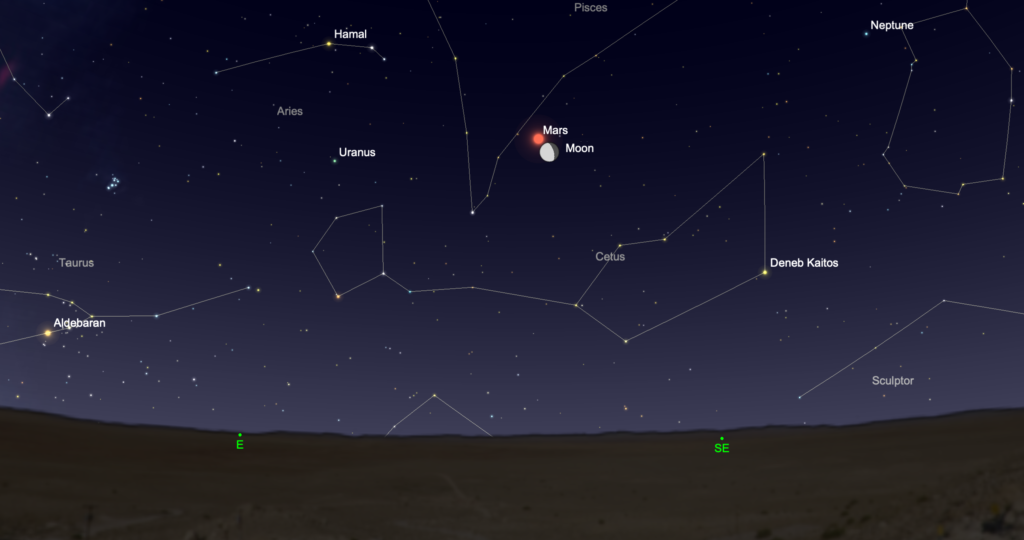
12-13 August. The Perseid meteor shower peaks in the early-morning hours. This is the finest meteor shower of the year for northern stargazers, with 40-60 meteors per hour visible at the peak in the hours before dawn on August 13. Once called the Tears of St. Lawrence, this meteor shower occurs as the Earth moves through a stream of debris left by Comet Swift-Tuttle. This year, the Moon is at third-quarter, not ideal for seeing the faintest meteors, but get started watching before midnight, away from city lights, and you will be rewarded with a bright meteor every few minutes or so. The Perseids are also a long-lasting show, running from July 17 through August 25. So if you miss the peak, you still have a good chance to see some meteors.
13 August. If you stay up late to watch the Perseids, look for Venus rising in the east at about 3:15 a.m. local time. Today the planet lies at greatest western elongation about 46o from the Sun. It shines at magnitude -4.3 and its disk is exactly half-lit by the Sun.
17 August. Look low in the east-northeast in the early-morning hours to see the Beehive star cluster (Messier 44) just below a very thin waning crescent Moon. While the Beehive is usually a prominent object, today it’s a challenging sight as it rises in the pre-dawn glow. Binoculars are a must. Look above the pair to see the stars Castor and Pollux stacked vertically, and brilliant Venus nearby.
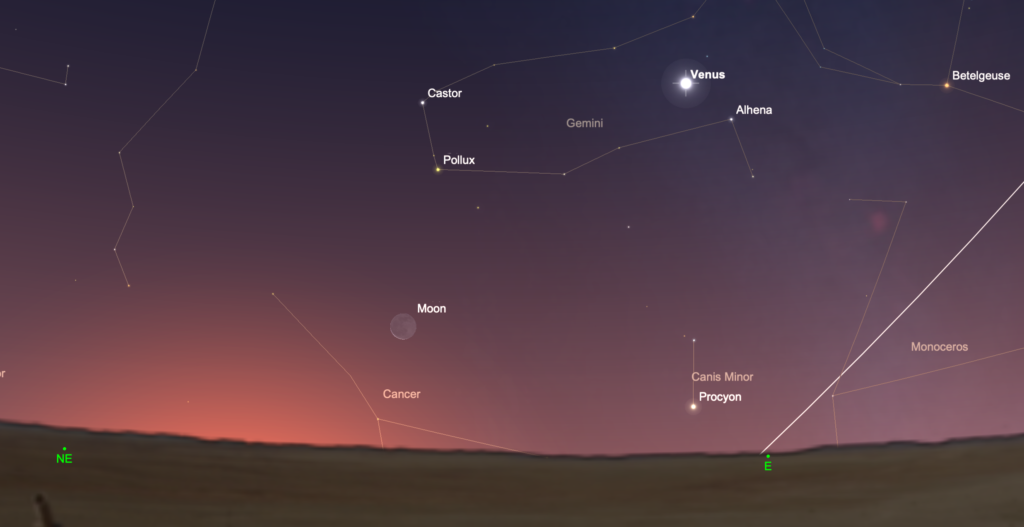
19 August. New Moon, 2:42 UT
25 August. First-Quarter Moon, 17:58 UT
25 August. The Moon lies about three finger-widths (5o) from the first magnitude star Antares in the constellation Scorpius.
27 August. As at the beginning of the month, Jupiter and Saturn are joined by the waxing gibbous Moon to the right of the Teapot asterism of Sagittarius.